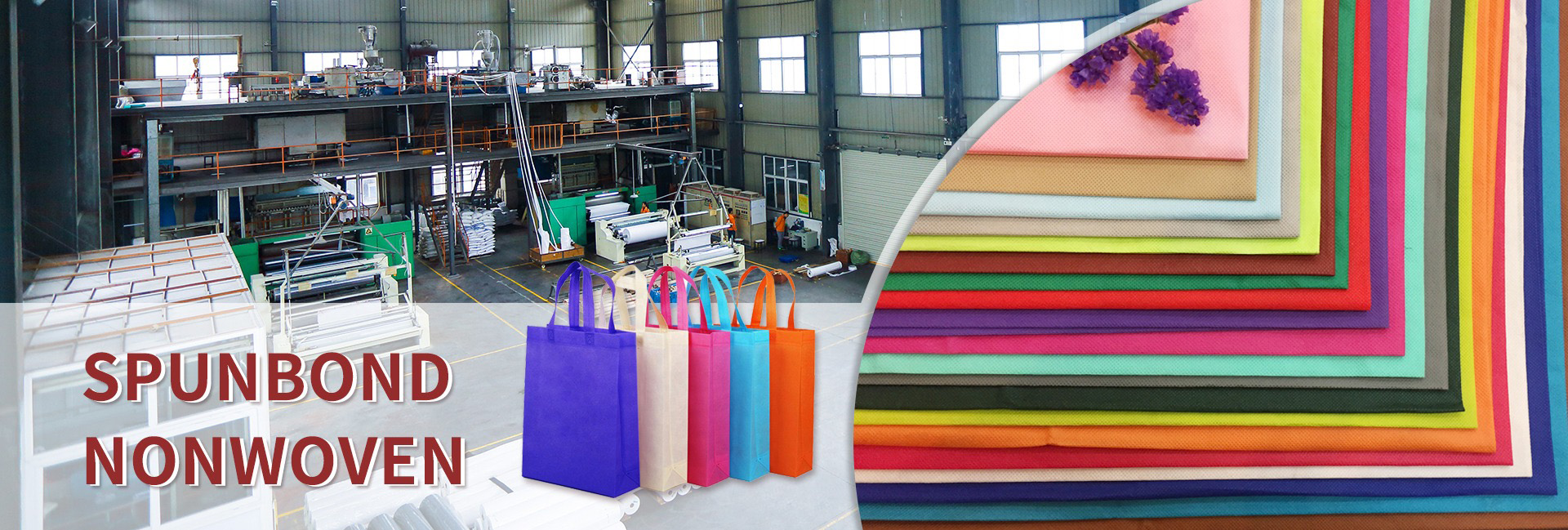The perforation process of spunlace nonwovens is a key technology in its production process, and its main purpose is to improve the permeability, touch and functionality of the product. The following is a detailed analysis of the reasons for perforation and the technical principles:
The core process purpose of perforation
Improve liquid permeability
In applications such as sanitary napkins and medical dressings, spunlace nonwovens need to quickly guide liquids (such as blood and body fluids). Traditional hot air cloth or PE perforated film has poor permeability due to poor fiber hydrophilicity or hydrophobic material. By forming conical micropores (large pore size → small) on the cloth surface, liquid can penetrate unidirectionally (easy to penetrate in the forward direction and anti-reverse permeation in the reverse direction), significantly improving the instantaneous absorption capacity.
Improve touch and softness
The perforation process causes the fibers to melt and reorganize locally, reducing hard bonding points and avoiding friction discomfort during skin contact, while retaining the original fluffy and soft characteristics of nonwovens.
Enhance fiber entanglement and structural stability
During the perforation process, high-pressure water flow or heat pressure promotes secondary entanglement of fibers, improves the strength of the cloth surface, and avoids loose structure caused by opening holes.
Technical methods for perforation formation
1. Hot pressing perforation method (mainstream process)
Equipment: A pair of rollers (active roller + driven roller) are used, and the active roller surface is provided with conical convex teeth (heated at 90-150℃), and the driven roller corresponds to concave teeth or elastic layer (such as rubber).
Principle: Thermoplastic fibers (such as polyester and polypropylene) melt and soften under the high temperature of the convex teeth; mechanical pressure pierces the cloth surface, and the fibers around the hole shrink to form a conical through hole; the concave teeth or elastic layer provide support and cooling to prevent the hole from rebounding.
Advantages: The conical hole realizes one-way liquid conduction, which is suitable for the surface layer of sanitary napkins (such as patent CN200710068588.4).
2. Water spunlace direct perforation method
Equipment: Use a perforation die with protruding convex points (metal/non-metal material) with a high-pressure water spunlace head (spray pressure 10-20MPa).
Principle: After the fiber web is pre-wetted, the punching die convex points pierce the fabric surface from bottom to top; at the same time, the water jet head sprays water (0.1mm diameter) from top to bottom to push the fiber entanglement and expand the hole; the dewatering hole drains water in time to avoid damage to the fiber web structure.
Advantages: Reduce the energy consumption of traditional flat net punching machines (reduced by 50%), and the convex point shape can be customized (such as pointed cone, arc shape), improving the clarity of the hole type.
3. Drum rebound assists perforation
In the drum hydroentanglement process, the water flow penetrates the fiber web and hits the surface of the metal drum. The rebounding water flow promotes the multi-directional entanglement of the fibers and indirectly forms a microporous structure.
Physical and chemical mechanism of perforation formation
Spunlace dynamics
High-pressure water jet (speed up to 350m/s) causes the surface fibers to displace vertically. After penetrating the fiber web, the net curtain/drum rebounds, and the fibers interweave and entangle under the positive and negative forces to form stable holes.
Hot melt-mechanical synergistic effect
During hot pressing perforation, the temperature needs to be precisely controlled (close to the fiber softening point but lower than the melting point) to ensure that the fiber melts and reorganizes rather than breaks, and the molten fiber at the edge of the tapered hole solidifies to enhance the anti-reverse osmosis effect.
Fiber property adaptation
Fineness: Fine fibers of 1.3–1.67dtex are easier to directional displacement;
Curl: Moderate curling is conducive to entanglement and locking holes;
Hydrophilicity: Viscose and cotton fibers improve liquid conduction efficiency.
Process optimization and application value
Energy saving and cost reduction: The spunlace perforation die replaces the traditional flat net perforator, and the installed capacity is greatly reduced from 515KW, and the mold life is up to 10 years (traditional polyester woven net is only 1 year).
Function customization: By adjusting the shape of the convex teeth/convex points (conical, prismatic) and the distribution density, the cloth design with different pore sizes and patterns can be achieved to meet the needs of medical and sanitary materials.
Quality improvement: The tapered hole structure solves the problems of stiff touch and high reverse osmosis rate of PE film, and its comprehensive performance is better than traditional materials.
Summary
The perforation of spunlace nonwovens is an active process driven by functional needs. The core causes include:
① Directed opening of holes by mechanical force of heat pressing or spunlace;
② Fiber melting and reorganization to form a stable structure;
③ Conical/micropore design optimizes liquid management performance.
The future trend is to further integrate low-energy perforation technology with degradable fiber materials to expand applications in high-end hygiene materials and environmental protection fields.
Dongguan Liansheng Non woven Technology Co., Ltd. was established in May 2020. It is a large-scale non-woven fabric production enterprise integrating research and development, production, and sales. It can produce various colors of PP spunbond non-woven fabrics with a width of less than 3.2 meters from 9 grams to 300 grams.
Post time: Jul-04-2025

